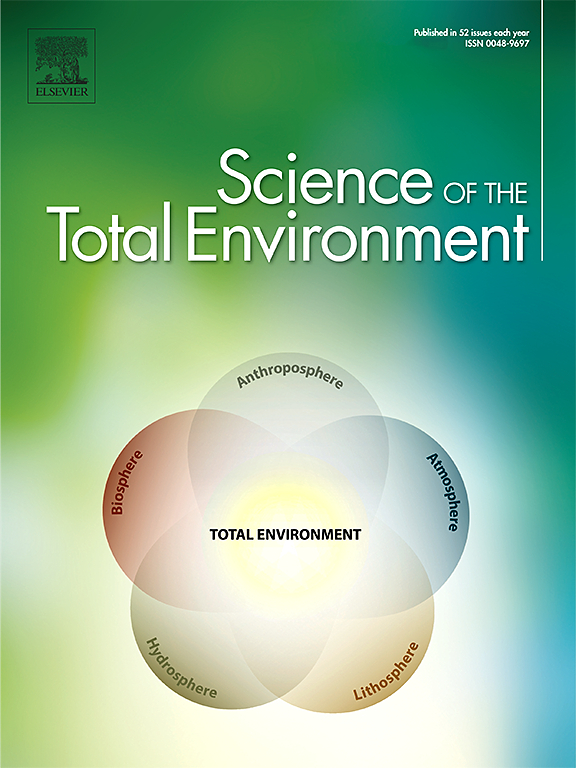Implications of river reconnection on phosphorus cycling in coastal wetlands
IF 8.2
1区 环境科学与生态学
Q1 ENVIRONMENTAL SCIENCES
引用次数: 0
Abstract
Louisiana's coastal wetlands are experiencing some of the world's largest land loss rates. This problem is partly due to levees along the Mississippi River, isolating the river from the coastal basins. This disconnect prevents delivering of sediment and nutrients to the wetland-dominated coastal basins, where sediments would increase marsh accretion. Louisiana's Coastal Master Plan aims to reconnect the river with riparian areas through construction of a diversion. Baseline phosphorus (P) dynamics were determined before river reconnection and compared to an area with an unmanaged connection to the river. In Barataria Basin, the equilibrium P concentration (EPC) was lower in both the marsh (0.039 ± 0.015 mg L−1) and open water sediments (0.016 ± 0.008 mg L−1) than the concentration of soluble reactive phosphorus (SRP) in the Mississippi River (∼0.075 mg L−1). Additionally, total P was significantly higher in marsh soil (677 ± 183 mg P kg−1) compared to the open water sediments (503 ± 90 mg P kg−1). On average, the organic residual P fraction was the dominant individual P form, comprising 39 % (254 ± 78.2 mg P kg−1) of total phosphorus (TP) in marsh soil and 45 % (208 ± 65.9 mg P kg −1) of TP in open water sediments. The primary form of total P in the river sediment is the Fe/Al mineral fraction at 43 % (469 mg P kg −1). Consequently, river reconnection, the dominant form of soil P will shift to inorganic Fe/Al-bound P. This shift will likely increase the internal loading of P over time due to iron reduction, releasing newly deposited mineral-bound phosphorus into the water column In vegetated wetland areas, this river-sourced P can be taken up by algae and macrophytes, while in open water areas, there could be an increase in algal blooms in these newly river-reconnected coastal basins, changing the P dynamics.

河流再连接对沿海湿地磷循环的影响
本文章由计算机程序翻译,如有差异,请以英文原文为准。
求助全文
约1分钟内获得全文
求助全文
来源期刊

Science of the Total Environment
环境科学-环境科学
CiteScore
17.60
自引率
10.20%
发文量
8726
审稿时长
2.4 months
期刊介绍:
The Science of the Total Environment is an international journal dedicated to scientific research on the environment and its interaction with humanity. It covers a wide range of disciplines and seeks to publish innovative, hypothesis-driven, and impactful research that explores the entire environment, including the atmosphere, lithosphere, hydrosphere, biosphere, and anthroposphere.
The journal's updated Aims & Scope emphasizes the importance of interdisciplinary environmental research with broad impact. Priority is given to studies that advance fundamental understanding and explore the interconnectedness of multiple environmental spheres. Field studies are preferred, while laboratory experiments must demonstrate significant methodological advancements or mechanistic insights with direct relevance to the environment.
 求助内容:
求助内容: 应助结果提醒方式:
应助结果提醒方式:


